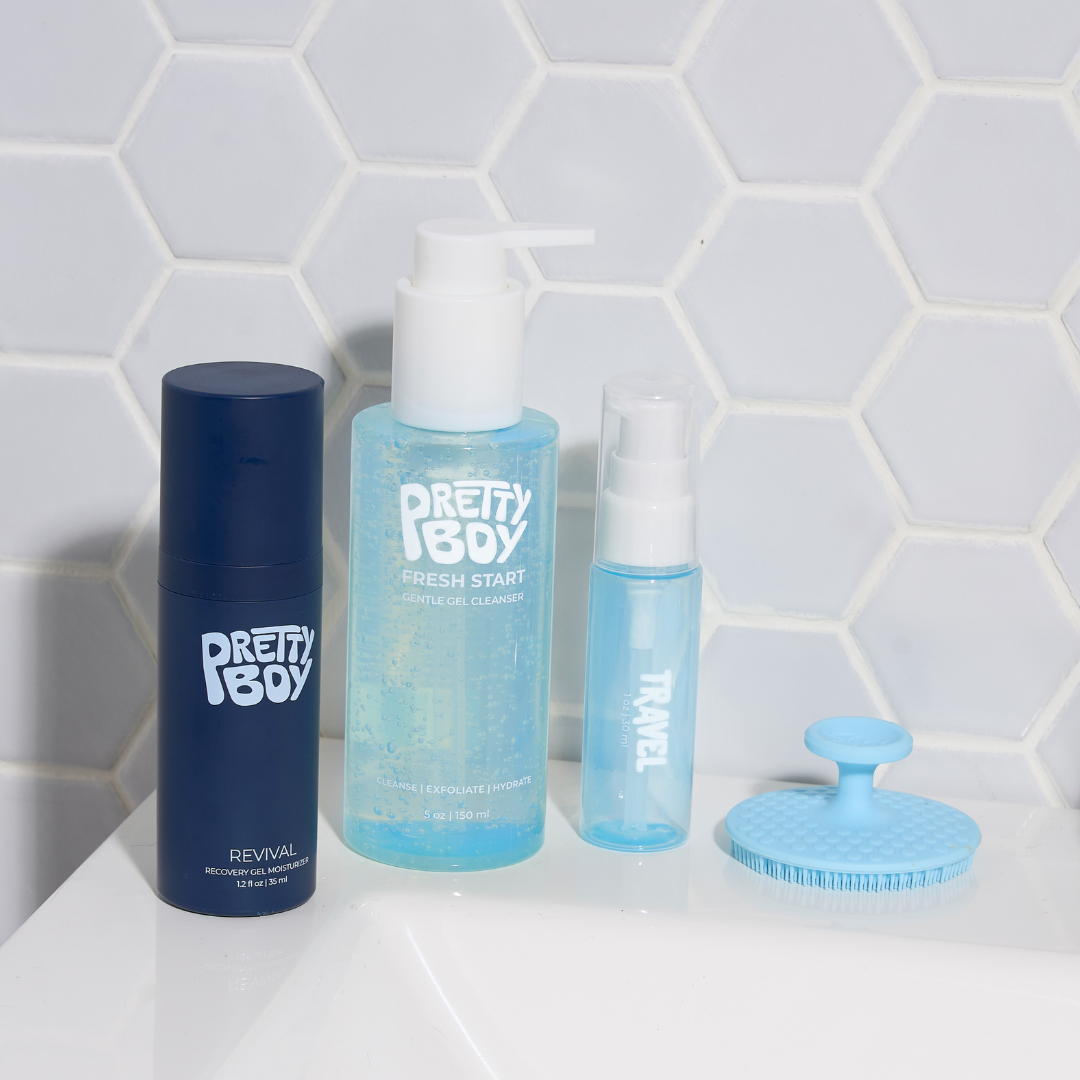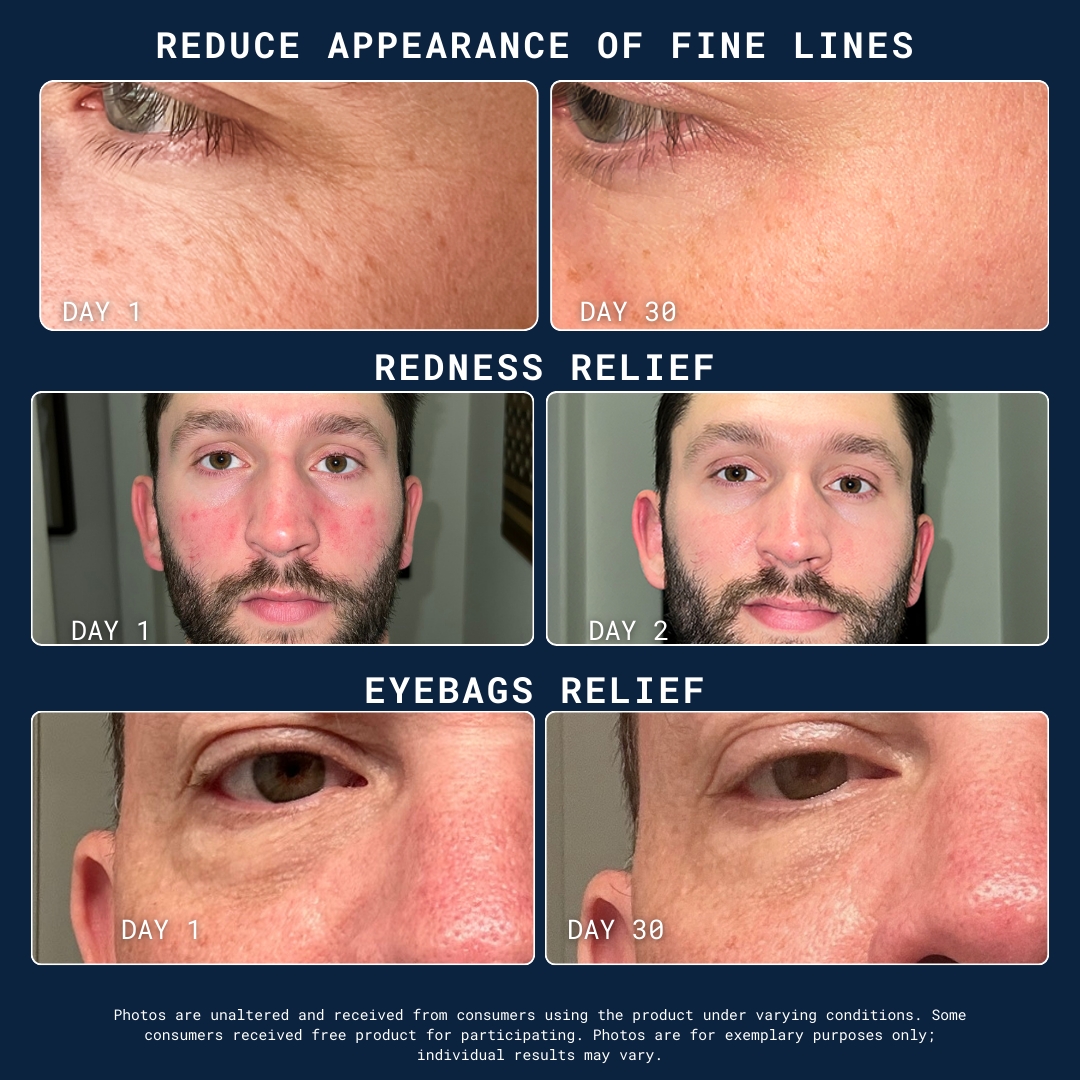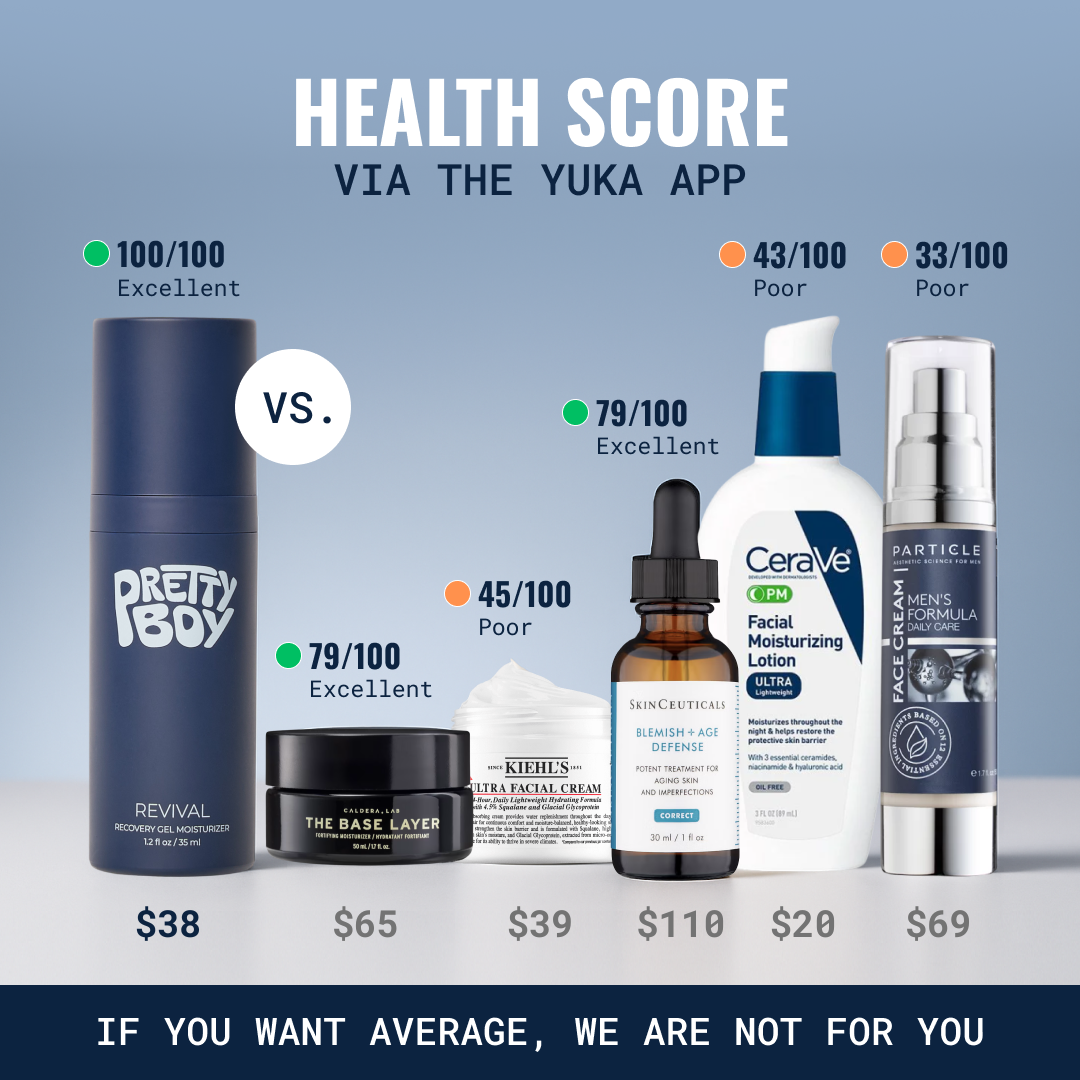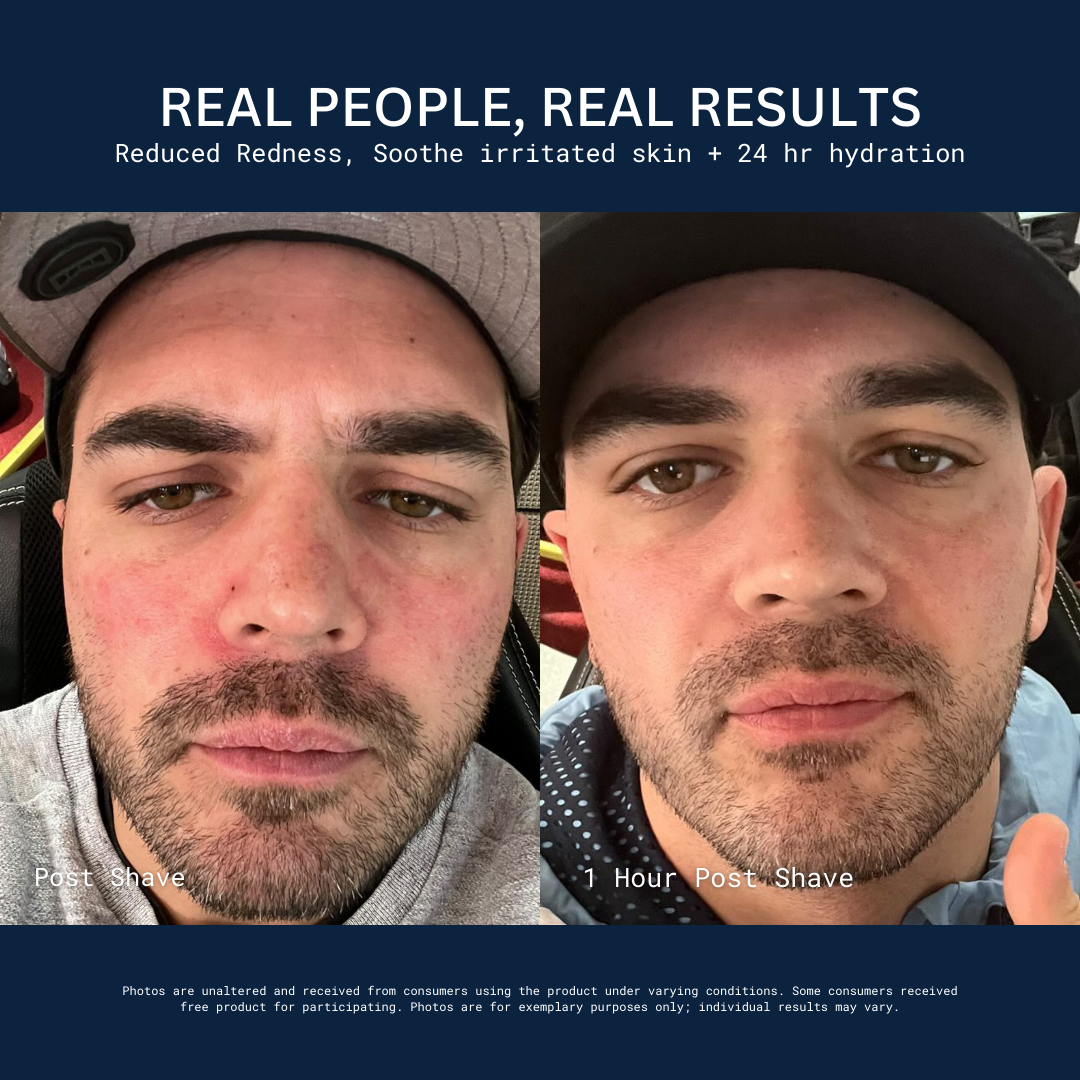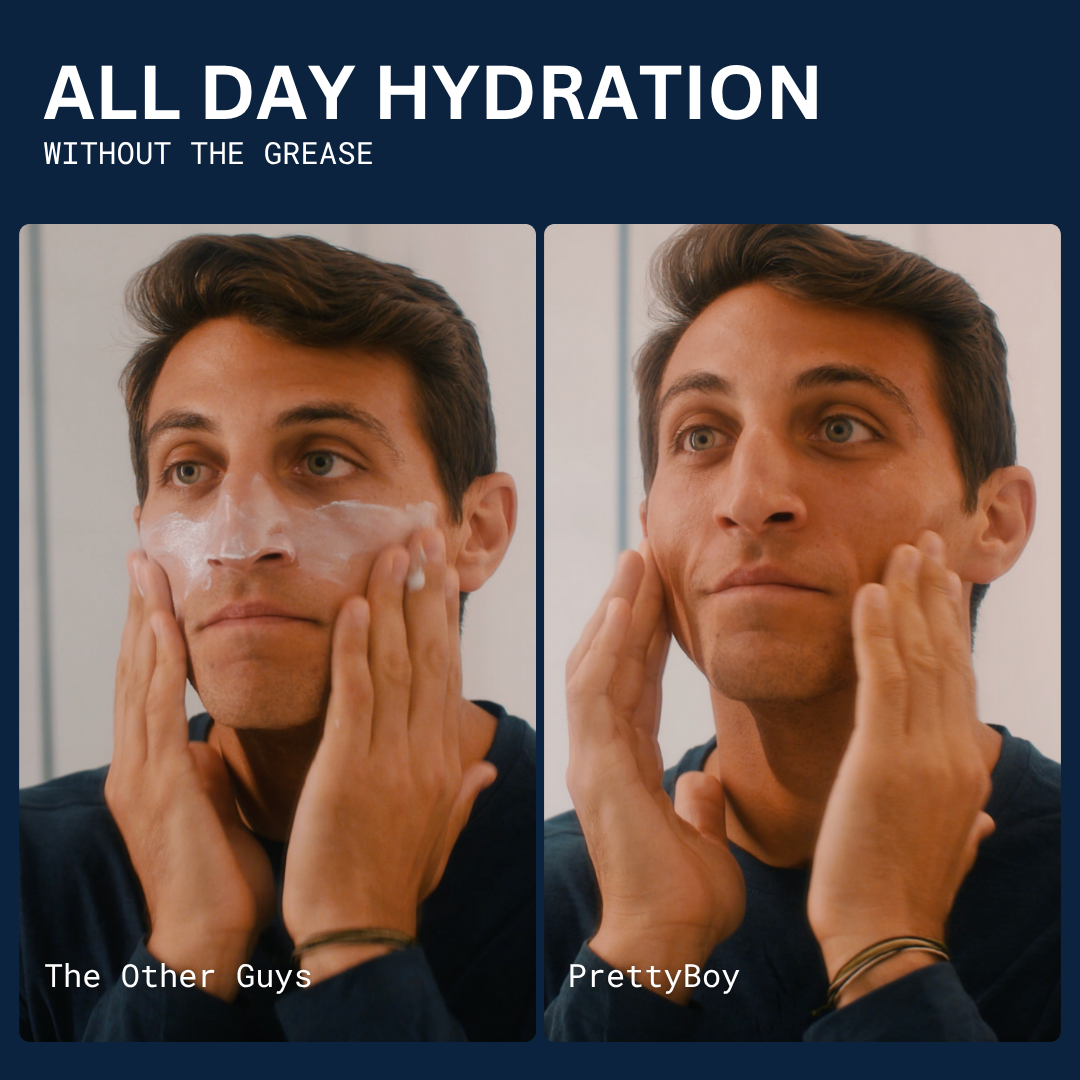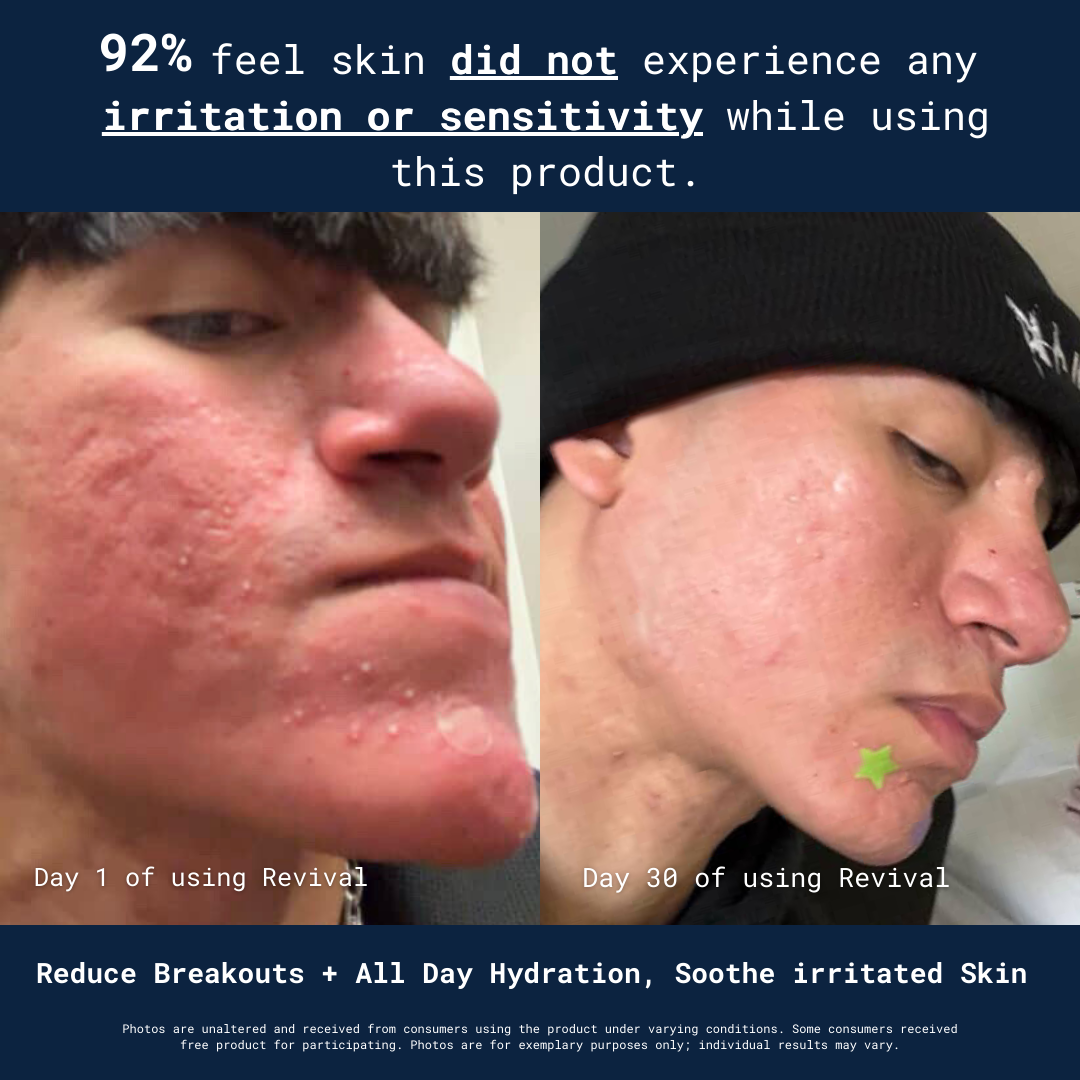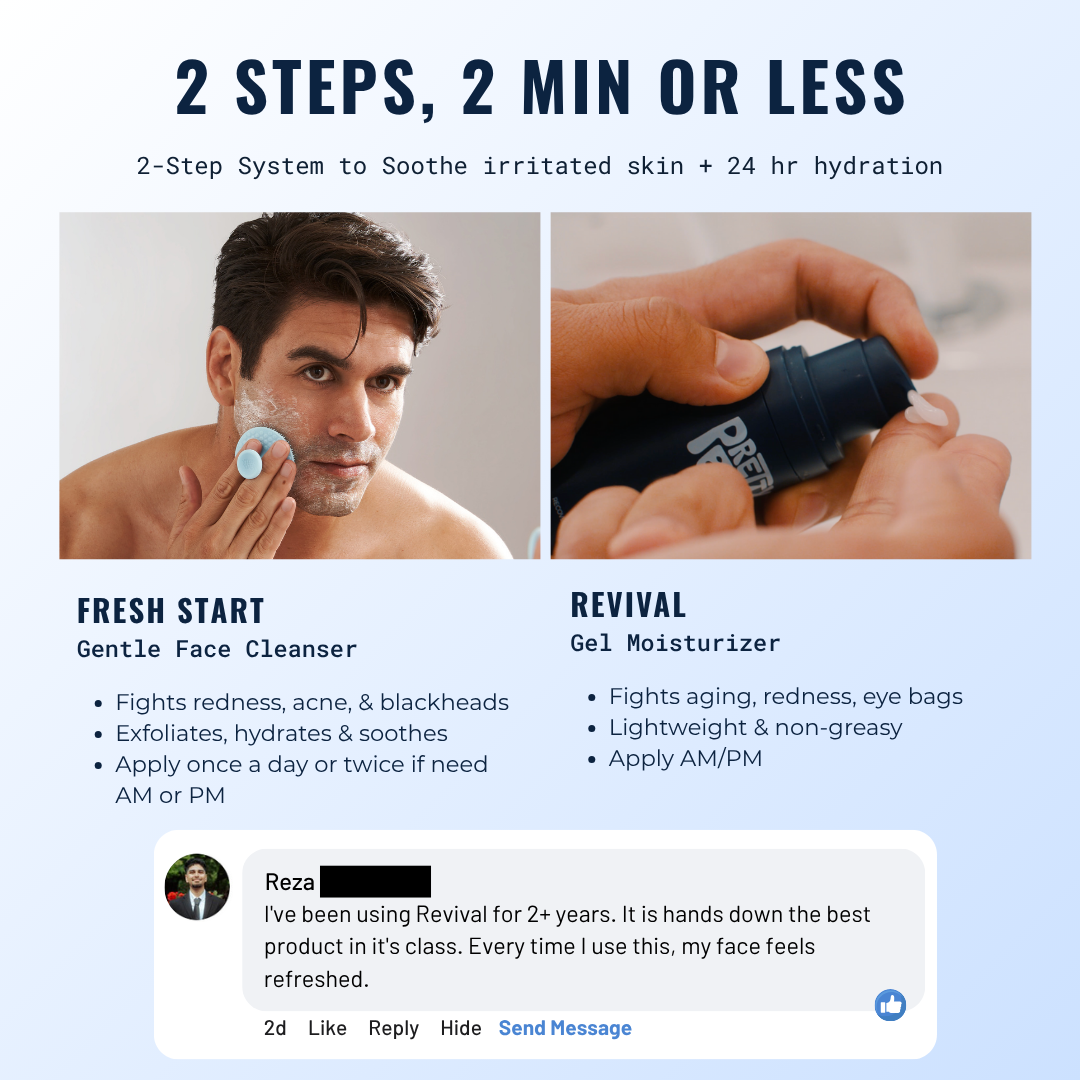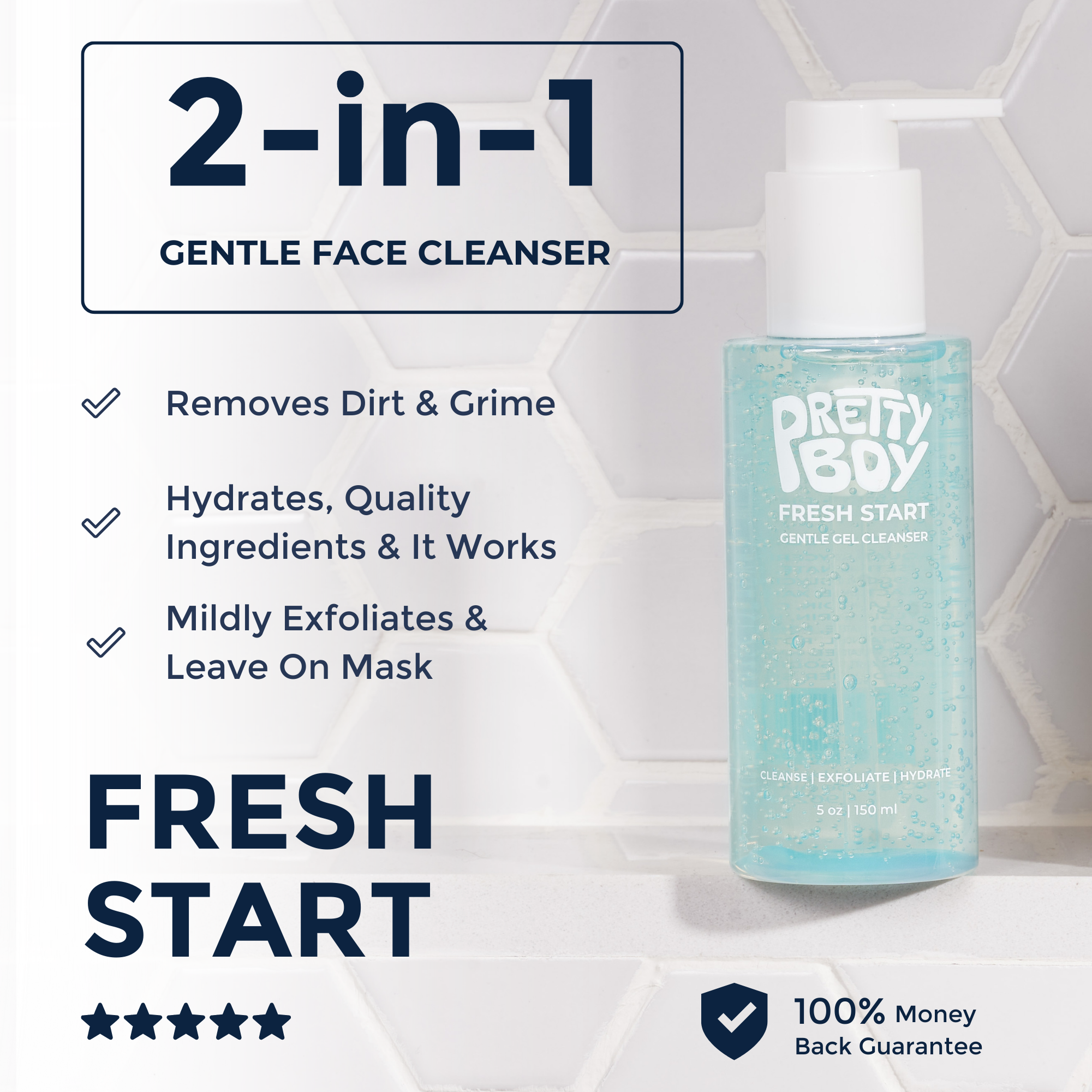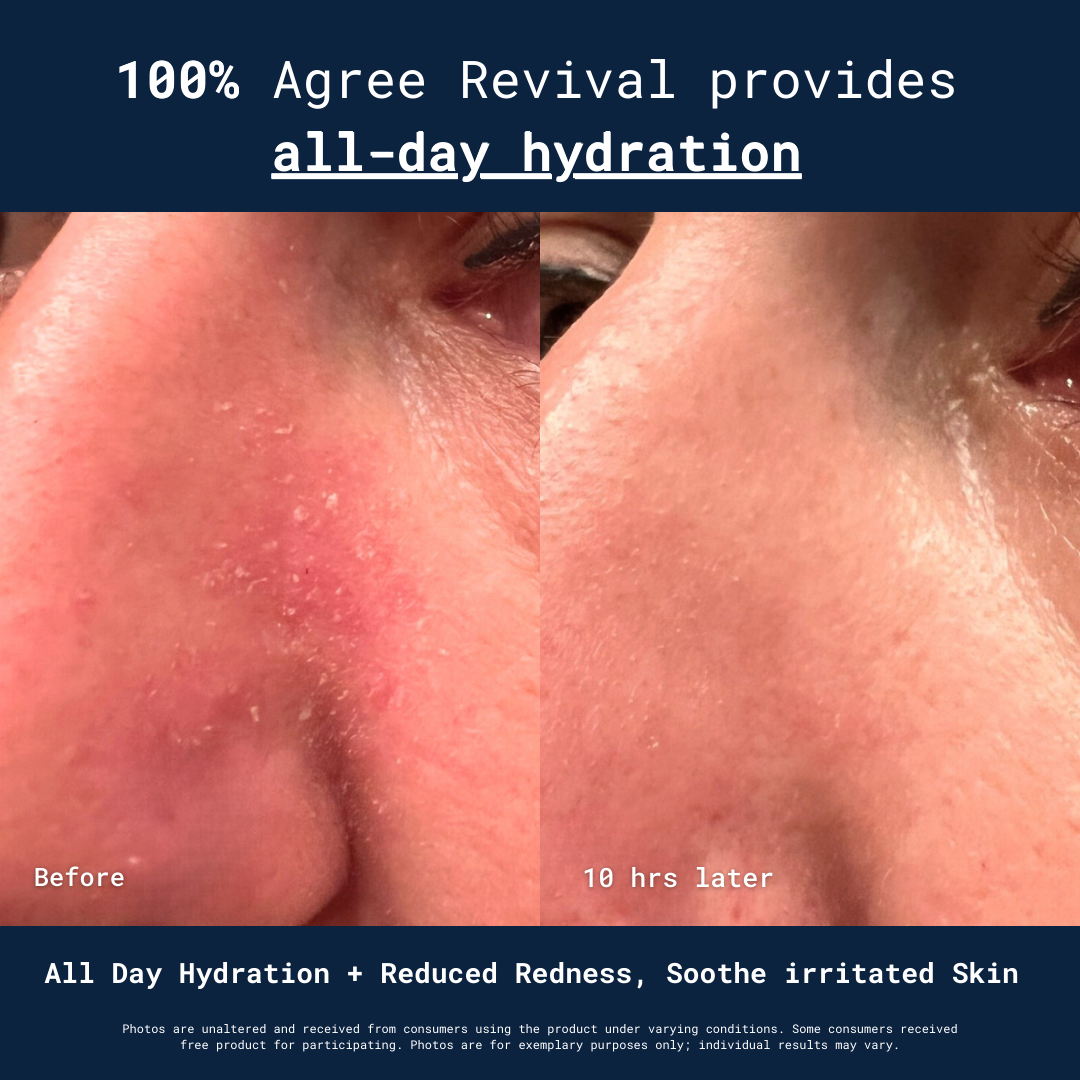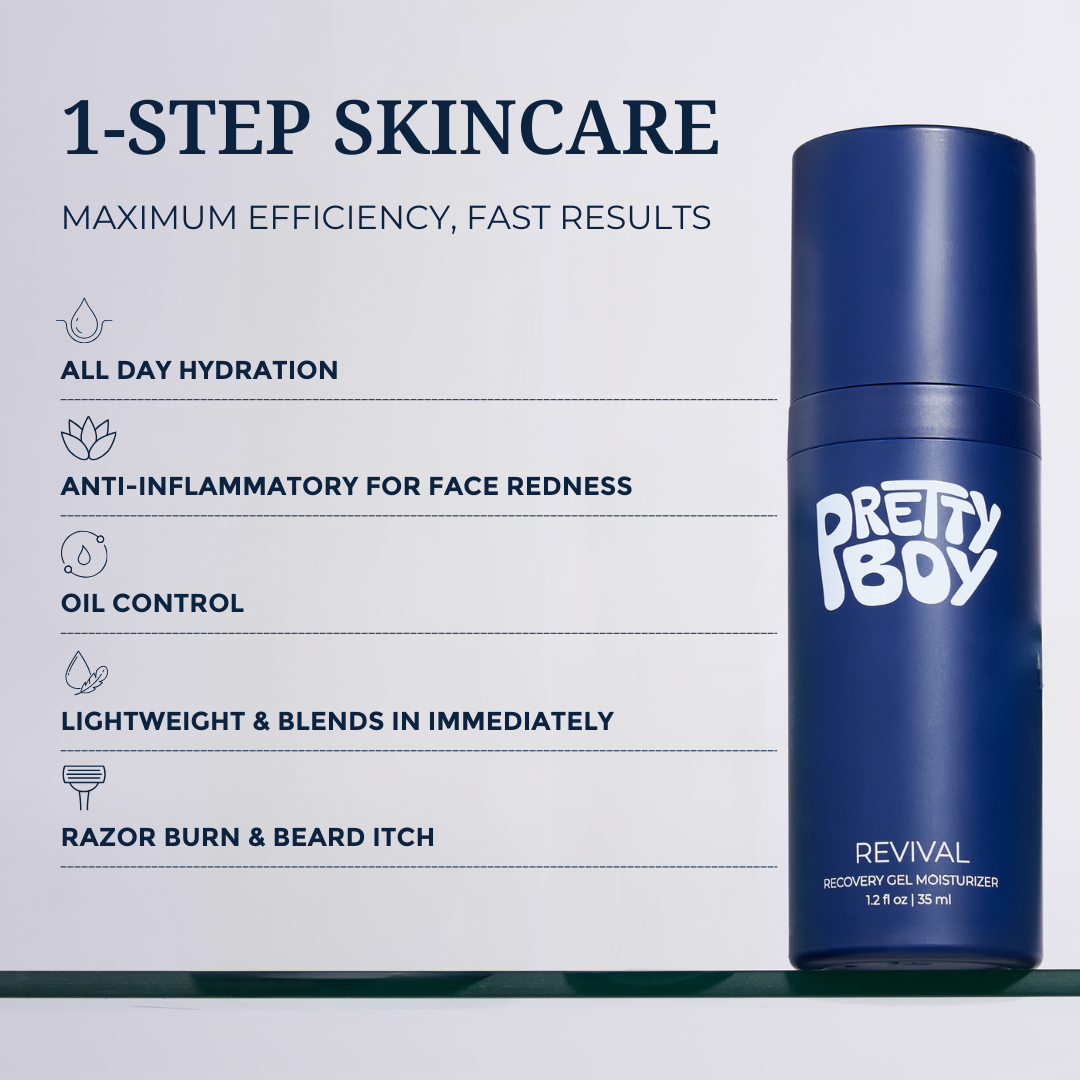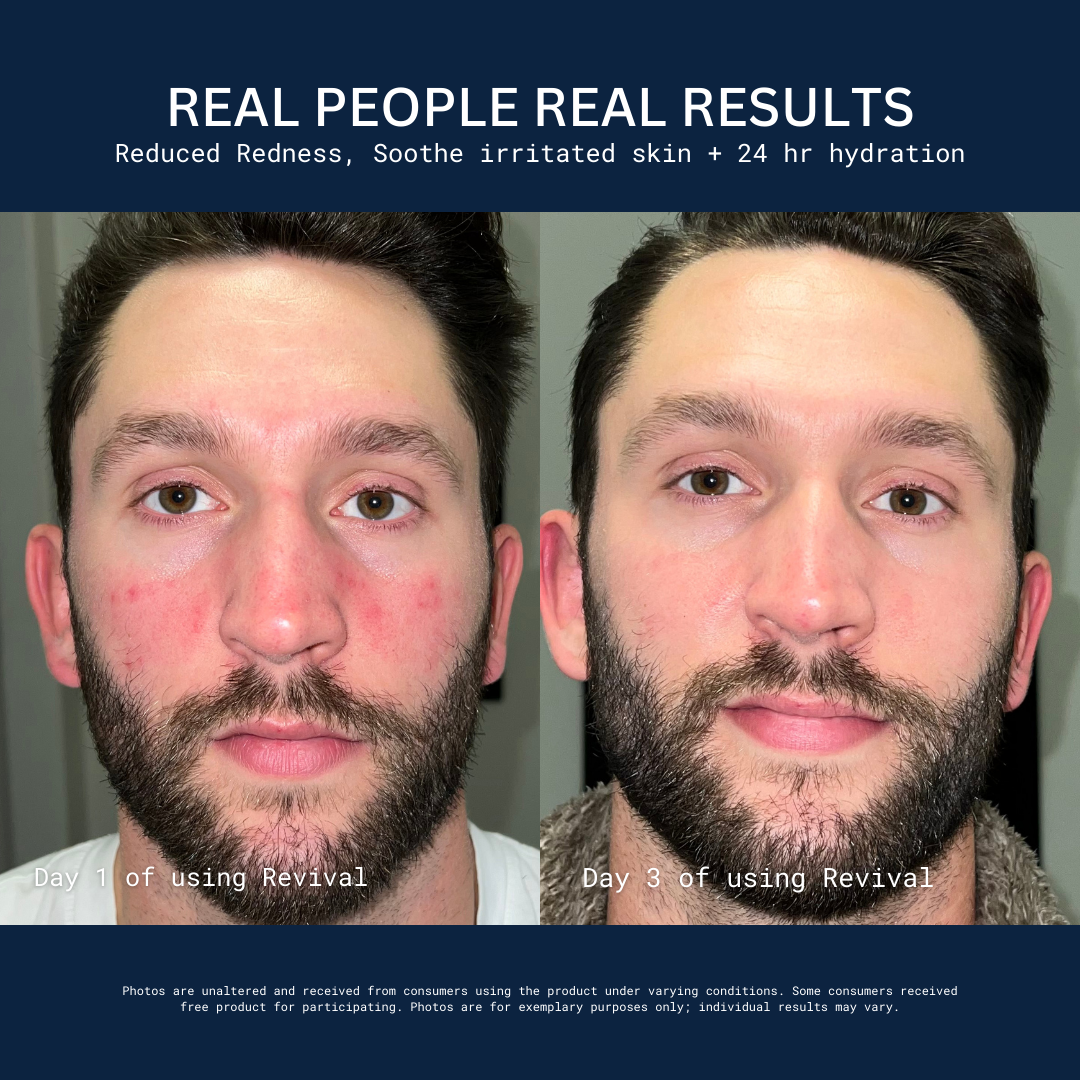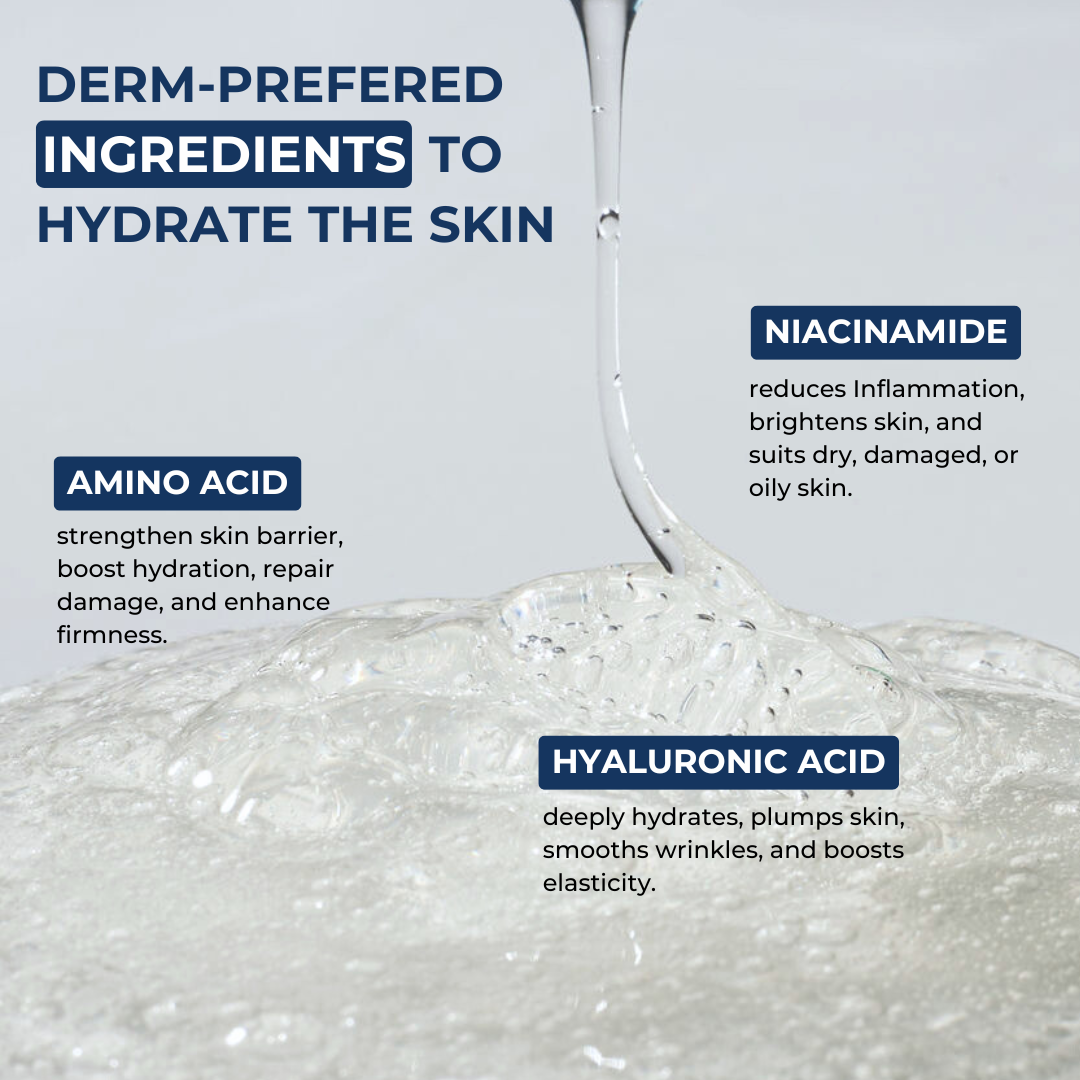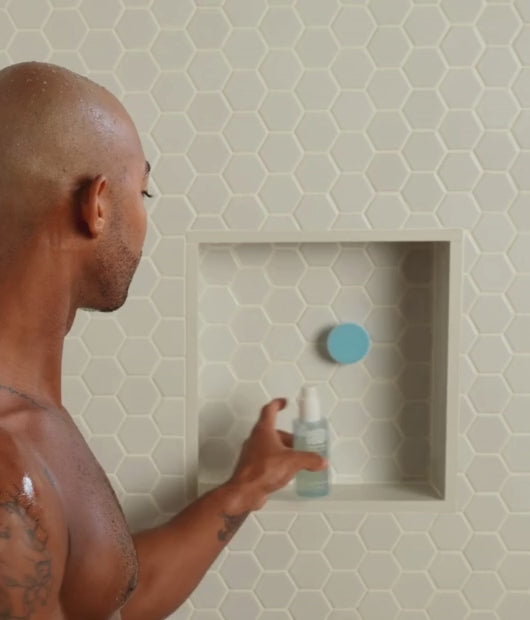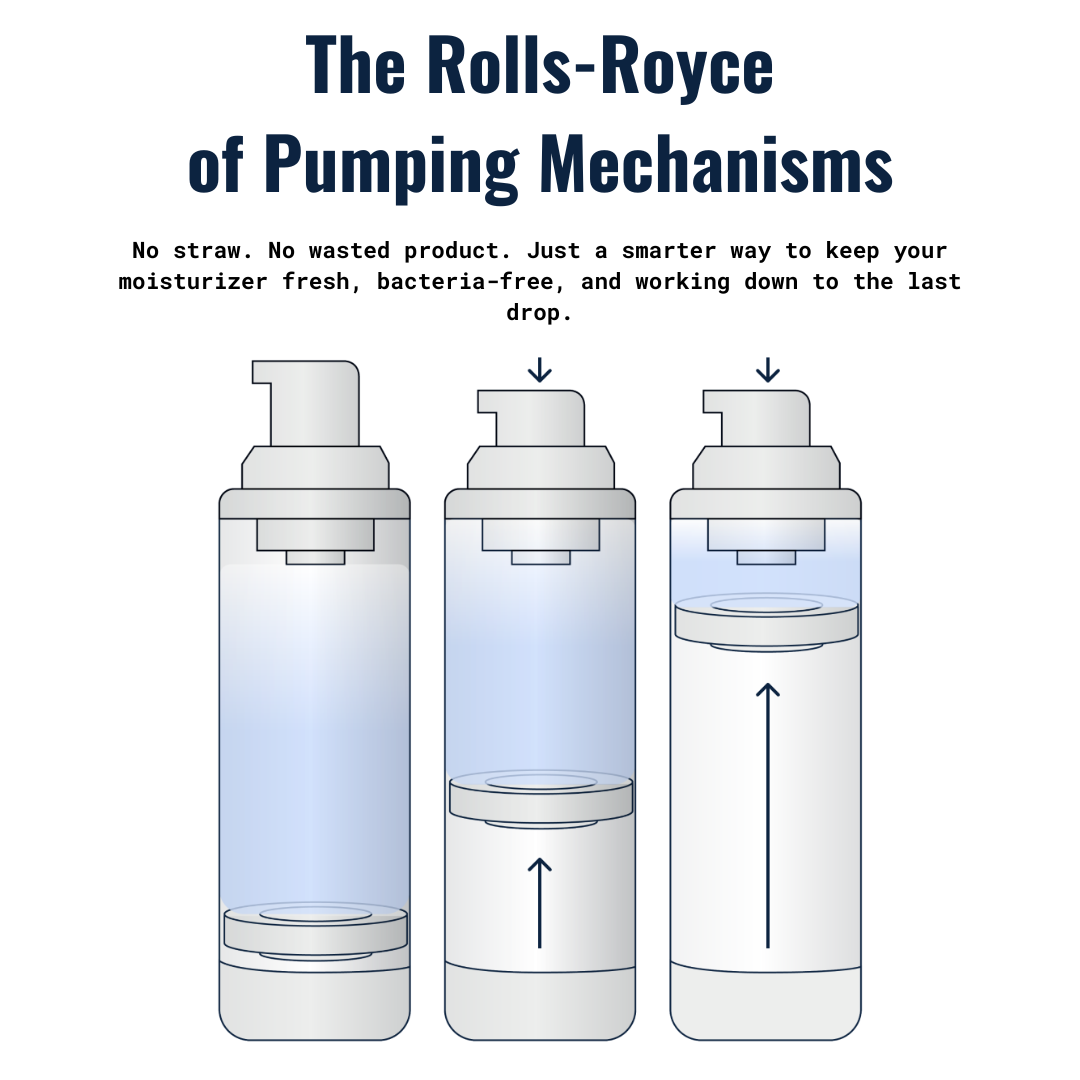Here are the two easiest ways to use niacinamide:
- Use a daily facial cleanser with niacinamide
- Apply a niacinamide moisturizer (2-5% concentration) twice daily
Niacinamide is popping off faster than Lil Wayne in the mid-2000s. In case you’ve been living under a rock (or just don’t care about your skin), niacinamide is a superhero skincare ingredient that’s easy, effective, and affordable for basically any dude to incorporate into his regimen.
We won’t go all Bill Nye the Science Guy on you, so here’s the gist: Niacinamide (AKA nicotinamide) is a form of vitamin B3 that plays several key roles in maintaining a healthy complexion—from controlling oil production to reducing redness to fighting acne and more.
In other words, niacinamide is the ultimate multitasking ingredient for clear, strong, healthy skin. You can get niacinamide from food and supplements, but research shows niacinamide is most effective when you apply it directly to your face.
This leads to a common question: How do you use niacinamide in your skincare routine? You came to the right place to find out. Keep reading for dermatologist-approved tips for using niacinamide.
How to Use Niacinamide In Your Skincare Routine
You don’t need a dermatology degree to add niacinamide to your skincare routine. All you have to do is get a facial cleanser with niacinamide and follow that up with a niacinamide moisturizer. It’s natural, safe for any skin type, and compatible with plenty of other products.
1. Use a Facial Cleanser with Niacinamide
It’s time to stop scrubbing your face with body wash—or worse, 3-in-1 shampoo. One of the easiest ways to include niacinamide in your skincare routine is by using a facial cleanser with niacinamide in the formula.
Giving your skin a small dose of niacinamide every time you wash your face helps to calm irritated skin and reduce redness, especially if you deal with acne or rosacea. Additionally, niacinamide helps regulate sebum production (Opens in a new window) (Opens in a new window), improving the appearance of oily or acne-prone skin without zapping away all of your natural moisture.
Start by wetting your face with lukewarm water, then apply a small amount of the cleanser onto your fingertips and gently massage it onto your skin in circular motions. Rinse thoroughly with water and pat your skin dry. Use the cleanser once or twice daily, depending on your skin's needs and tolerance.
2. Use a Niacinamide Moisturizer
Using a moisturizer with niacinamide is a smart move for your skin because it's like hitting multiple targets with one shot. Not only do you give your skin the hydration it craves, but you also deliver that niacinamide goodness to tackle redness, excessive oil production, acne, and more.
Be warned: Not all niacinamide moisturizers are created equal. A lot of brands sprinkle a a tiny amount of niacinamide into their formula just so they can brag about it in their marketing. But if you want to reap the benefits, you need a concentration between 2-5%, like our formula for Revival.
To use your niacinamide moisturizer, spread a dime-sized amount evenly across your face and neck after cleansing. Your skin is more absorbent when it’s wet, so this is the ideal time for it to soak up niacinamide. Apply the niacinamide moisturizer twice daily, once in the morning and again at night.
What Are the Benefits of Niacinamide?
Niacinamide is like the Bo Jackson of skincare ingredients: versatile as hell. Let’s take a look at five of the main benefits you can get by using niacinamide:
- Reduces redness and inflammation: Niacinamide has anti-inflammatory properties that reduce redness and irritation by calming your skin's response to external aggressors like UV radiation and pollution
- Fades dark spots: Niacinamide inhibits the transfer of pigment in your skin, creating a more even distribution of melanin and a reduction in hyperpigmentation. By regulating melanin production, niacinamide helps to fade dark spots and acne scars, resulting in a brighter and more radiant complexion.
- Boosts the production of ceramides: Ceramides are essential lipids that maintain your skin's moisture barrier and protect it from damage. Niacinamide stimulates the production of those ceramides, boosting its ability to retain moisture and improving overall hydration levels.
- Slows signs of aging: Niacinamide promotes collagen synthesis, a protein that provides structural support to the skin and reduces the appearance of fine lines and wrinkles.
- Controls sebum production: Niacinamide regulates your sebaceous glands, which churn out oil (sebum) in the skin. By balancing sebum production, niacinamide minimizes excess oiliness, reducing the likelihood of clogged pores and breakouts.
Can You Use Niacinamide Every Day?
Yes, most adults are in the clear to use niacinamide every day as part of their skincare routine. It's well-tolerated by most skin types, including sensitive skin, and it can be used both morning and night.
It's always a good idea to start with a lower frequency, especially if you're introducing niacinamide for the first time or if you have particularly sensitive skin.
How Long Does It Take for Niacinamide to Work?
You may start to notice improvements in your skin's texture and appearance within a few weeks of consistently using niacinamide. However, for more significant changes, such as a reduction in hyperpigmentation or improvement in fine lines and wrinkles, it may take several weeks to a few months of regular use to see results.
What Skincare Ingredients Work Well With Niacinamide?
Like a side of ranch dressing, niacinamide pairs well with just about anything. Here are some other skincare ingredients that you can combine with niacinamide:
- Hyaluronic Acid: Hyaluronic acid is a powerful humectant that helps to attract and retain moisture in the skin. When combined with niacinamide, it can boost hydration levels and plumpness, resulting in smoother, more supple skin.
- Vitamin C: Vitamin C is a potent antioxidant that helps to brighten the skin, fade dark spots, and protect against sun damage. When used alongside niacinamide, it can enhance the skin's radiance and improve overall skin tone and texture.
- Retinol: Retinol, a form of vitamin A, is known for its anti-aging properties, including reducing the appearance of fine lines and wrinkles and promoting collagen production. Niacinamide can help to minimize any potential irritation or dryness associated with retinol use, making it suitable for those with sensitive skin.
- Alpha Hydroxy Acids (AHAs) and Beta Hydroxy Acids (BHAs): AHAs, such as glycolic acid and lactic acid, and BHAs, such as salicylic acid, are exfoliating ingredients that help to remove dead skin cells, unclog pores, and improve skin texture. When combined with niacinamide, they can enhance the exfoliating and brightening effects while minimizing the risk of irritation.
- Ceramides: Ceramides are lipid molecules that help to maintain the skin's barrier function and prevent moisture loss. When used with niacinamide, they can reinforce the skin barrier, improving hydration and protecting against environmental stressors.
Get All the Niacinamide You Need from Revival
If you do a quick Google search you’ll find niacinamide in all kinds of forms: serums, eye sticks, pills, powders, and more. It’s chaos out there. We’re all about simplifying your skincare routine, not turning it into a science experiment. That’s why we put the exact amount of niacinamide you need in every pump of Revival.
We’re also packin’ hyaluronic acid, ceramides, glycerin, and other MVP ingredients to keep your mug looking like a million bucks.
Snag a bottle and see why thousands of dudes are ditching the drugstore for Revival.




